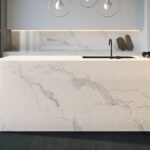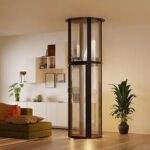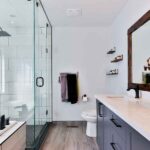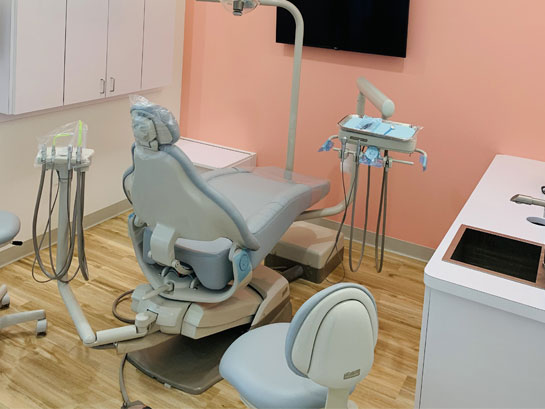When patients walk into a dental office, their first impressions are often shaped by the interior design of the space. This environment can influence their comfort level, anxiety, and overall perception of the dental practice. To create a welcoming and functional dental office, several best practices in interior design should be followed. These include focusing on ergonomic design, ensuring patient privacy, and effectively incorporating brand elements. This article delves into each of these aspects, providing practical advice for dental practitioners looking to enhance their office environment.
Ergonomic Design for Comfort and Efficiency
Ergonomics is crucial in dental office design, not only for the comfort of patients but also for the efficiency and health of the dental staff. Here are some key considerations:
- Patient Chairs: Choose chairs that are comfortable and adjustable to accommodate a wide range of patient sizes and needs.
- Dental Stations: Each workstation should be designed to allow easy access to tools and equipment while minimizing unnecessary movement, which can lead to fatigue.
- Reception Area: The reception desk should be at a height that is accessible for both standing adults and seated individuals in wheelchairs.
Prioritizing Patient Privacy
Privacy is a significant concern in any medical setting, including dental offices. Effective interior design can help ensure that patient conversations and treatments are conducted without being overheard or observed by others. Consider the following:
- Soundproofing: Use materials in walls, doors, and windows that help reduce sound transmission.
- Layout: Design the office layout to include private consultation areas away from high-traffic zones.
- Visual Barriers: Use frosted glass, strategic plant placements, and screens to create visual barriers without making spaces feel closed off.
Incorporating Brand Elements
A dental office is an extension of the brand, and its interior design should reflect the practice’s values and aesthetic. Here’s how to incorporate brand elements effectively:
- Color Scheme: Use colors from the logo or brand palette throughout the office to create a cohesive look.
- Artwork and Decor: Select art and decor that resonate with the brand’s identity and enhance the office’s visual appeal.
- Signage: Ensure that all signage is consistent with the brand’s typography and color scheme to reinforce brand identity.
For those seeking specialized assistance in designing a dental office that embodies these principles, the masterdent group offers expert services tailored to the unique needs of dental practices.
Lighting Considerations
Good lighting is essential not only for clinical accuracy but also for creating a warm and inviting atmosphere. Natural light should be maximized wherever possible, and artificial lighting should be sufficient but not harsh. Soft, indirect lighting can help reduce glare and shadows, making the environment more comfortable for both patients and staff.
Functional and Welcoming Waiting Areas
The waiting area is often where patients spend most of their time, and it plays a key role in their overall experience. Comfortable seating, a selection of reading materials, and amenities like a beverage station can make the waiting time more enjoyable. Additionally, including elements such as a children’s play area or a quiet zone can cater to the needs of diverse patient groups.
Technology Integration
Incorporating technology seamlessly into the office design can enhance the patient experience and streamline operations. From digital check-in kiosks to informative screens that explain dental procedures, technology can be used to educate, engage, and ease the processes within the dental office.
Visiting the website for further guidance on integrating these elements can provide additional insights and resources for dental practitioners looking to create an optimal environment for their patients and staff.
By following these best practices in interior design, dental offices can become more than just places for dental treatments—they can be spaces where patients feel genuinely welcomed and at ease, and where staff can work efficiently and comfortably.

 How to Choose the Right Window Replacement Contractor
How to Choose the Right Window Replacement Contractor  The Best Aircon servicing Singapore Maintaining Coolness by Performing Top-Quality Maintenance
The Best Aircon servicing Singapore Maintaining Coolness by Performing Top-Quality Maintenance  Why Columbus Homeowners Are Falling in Love with Epoxy Garage Floor Coatings
Why Columbus Homeowners Are Falling in Love with Epoxy Garage Floor Coatings  Flood Cleaning Services in Fort Worth, TX: Essential Steps to Restore Your Home
Flood Cleaning Services in Fort Worth, TX: Essential Steps to Restore Your Home  The Benefits of Caesarstone Quartz: Style, Strength, and Sustainability
The Benefits of Caesarstone Quartz: Style, Strength, and Sustainability  Are Home Elevators Worth the Investment? A Canadian Homeowner’s Guide
Are Home Elevators Worth the Investment? A Canadian Homeowner’s Guide  5 Common Gutter Problems That Gutter Guards Can Solve
5 Common Gutter Problems That Gutter Guards Can Solve  How a Whole-House Humidifier Can Help With Your Health
How a Whole-House Humidifier Can Help With Your Health  Master Bathroom Remodeling: Essential Tips for a Stylish Upgrade
Master Bathroom Remodeling: Essential Tips for a Stylish Upgrade 